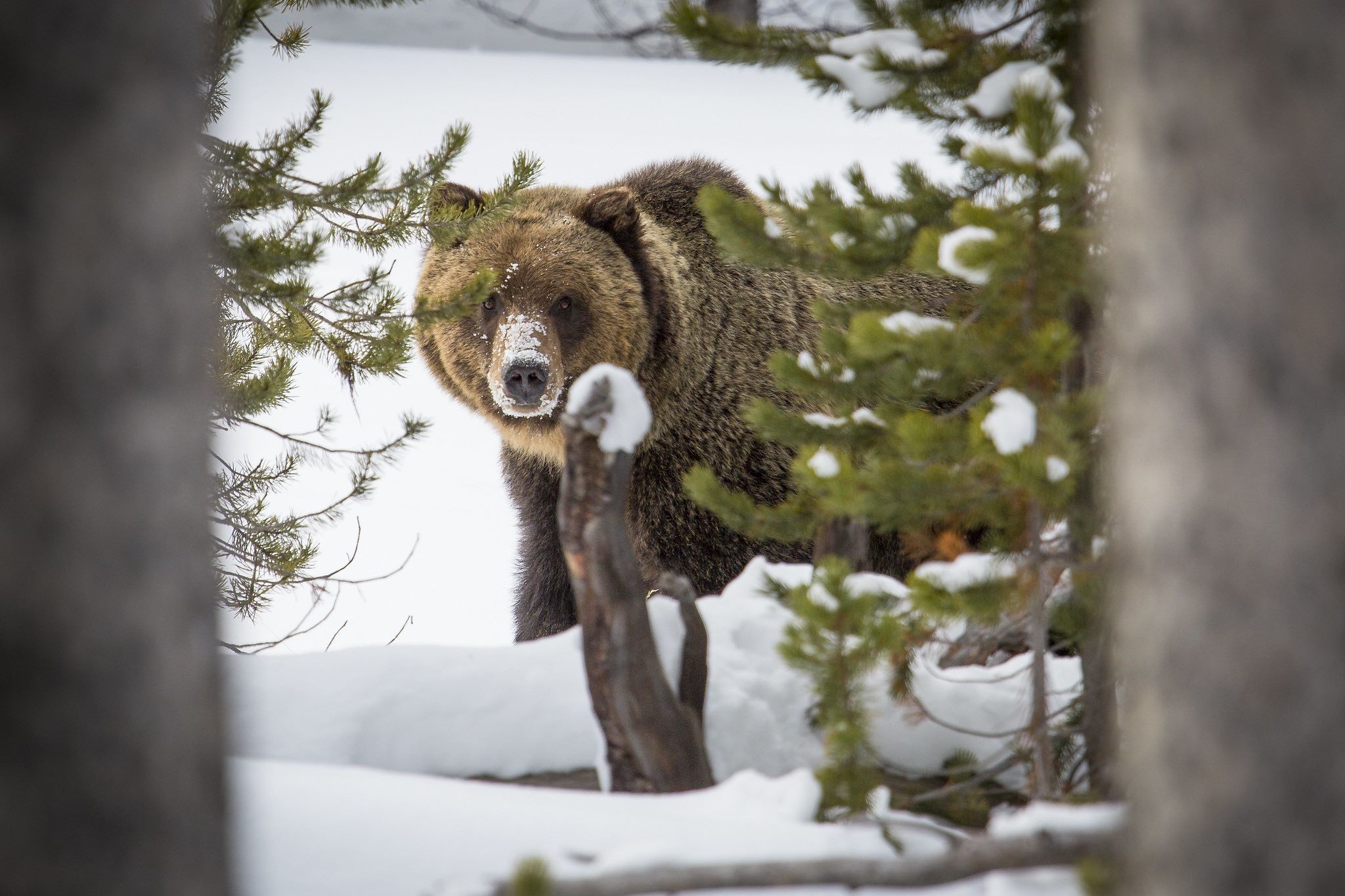Gov. Greg Gianforte celebrated U.S. Fish and Wildlife Service’s initial finding while environmentalists cast doubt on the state’s ability to manage the Montana state animal.
By Amanda Eggert MONTANA FREE PRESS
The U.S. Fish and Wildlife Service announced Friday that it is exploring whether grizzly bears in the Greater Yellowstone and Northern Continental Divide ecosystems are sufficiently recovered to no longer be considered as an endangered species.
The agency’s announcement was welcomed by Montana Gov. Greg Gianforte and other Republican officials, who’ve long sought to restore management of grizzly bears to state agencies. Environmental and conservation groups expressed wariness at the development, questioning whether state management would sustain a healthy, stable population of grizzlies and arguing that the USFWS is not meeting the requirements of the Endangered Species Act.
The agency’s decision was initiated by a trio of delisting petitions submitted to the federal government in recent years, including a 2021 petition the state of Montana filed under Gov. Greg Gianforte’s leadership. The USFWS said two of those petitions presented “substantial information” that NCDE and Yellowstone grizzlies “may qualify as distinct population segments and warrant removal from the federal government’s list of endangered and threatened species.”
A third petition, seeking the delisting of grizzlies across the Lower 48, did not present “substantial, credible information to warrant further action,” the agency said.
According to the agency’s last five-year review, there are about 1,100 grizzlies living in the Greater Yellowstone Ecosystem and about 740 in the NCDE. Before their near-extinction in the 19th and 20th centuries, an estimated 50,000 grizzlies roamed across much of the American West.

The agency also indicated that it would carefully consider the laws and regulations in states where NCDE and Yellowstone bears live — Montana, Wyoming and Idaho.
“The Service appreciates the states’ historical commitments and partnerships to recover bears, particularly through conflict prevention efforts that have been effective in reducing human-caused mortality. However, the impact of recently enacted state law and regulations affecting these two grizzly bear populations is of concern and needs to be evaluated,” the agency’s statement reads. “We will fully evaluate these and all other potential threats, and associated state regulatory mechanisms, in detail when we conduct the status assessments and make the 12-month findings.”
“After decades of work, the grizzly bear has more than recovered in the NCDE, which represents a conservation success,” Gov. Gianforte said in a press release. “As part of that conservation success, the federal government has accepted our petition to delist the grizzly in the NCDE, opening the door to state management of this iconic American species.”
Montana Senate President Jason Ellsworth, R-Hamilton, said the Montana Legislature has advocated for state management of grizzlies for “years.”
“I’m glad to see this step in the right direction from the federal government. Now they need to follow through,” he said.
The action comes on the final day for the public to comment on a 202-page draft grizzly bear management plan Montana Fish, Wildlife and Parks released late last year in anticipation of an eventual delisting. That document outlines the state’s plan for rolling out a grizzly hunting season, managing bears that travel outside the Greater Yellowstone and Northern Continental Divide ecosystems, and monitoring bear mortality in those areas.
FWP spokesperson Greg Lemon described the federal government’s decision as a “critical next step on the path to delisting grizzlies in the GYE and NCDE.
“We look forward to working with the Fish and Wildlife Service on its review,” he said.
Mike Phillips, executive director of the Turner Endangered Species Fund, said he’s appreciative of USFWS’s commitment to take stock of the recovery program and the fruit it’s borne, but he argued the agency is taking the wrong approach by considering NCDE and Yellowtone bears as distinct populations. He’d rather see the agency “show their math” and consider why other pieces of grizzlies’ historical range like western Colorado, which has millions of acres of public land, aren’t part of the recovery conversation.
“This piecemeal approach really struggles against the systemic approach to recovery envisioned by the Endangered Species Act,” he said. “You can’t list something [as a distinct population segment] just to turn around and delist it. That sort of administrative Jiu Jitsu isn’t what the act intended.”
Alliance for a Wild Rockies director Michael Garrity referenced the distinct population segment issue in an email to Montana Free Press, noting that the U.S. Ninth Circuit Court of Appeals found in 2020 that in the original grizzly bear listing rule, the Lower 48’s whole population was considered one population. That court ruling effectively overturned the agency’s attempt to delist Greater Yellowstone Ecosystem bears.
Garrity also said that laws like one the Montana Legislature passed in 2021 preventing FWP from transplanting grizzlies into corridors between recovery zones will only “ensure that grizzly bears never have a viable population.”
“For grizzlies to recover, we need to once again have one connected population,” Garrity said.
The public has three months to comment on the USFWS’s 90-day finding, which is a preliminary step in the delisting process. That comment period is expected to open Feb. 6.
The announcement also starts the clock on a 12-month timer for the agency to conduct a “focused, repeatable, and rigorous scientific assessment” of grizzlies’ status. During that time, the agency will consider the current condition of NCDE and Yellowstone grizzlies and their habitat. Agency staff will also examine how future environmental conditions and conservation efforts are expected to impact grizzly distribution.
Once the species status assessments are complete, the agency will either abandon delisting for now or initiate a yearlong process to issue a rule formally delisting the bears. That, too, will be subject to public comment.
The announcement also comes, the agency noted, as it prepares to celebrate the Endangered Species Act’s 50th birthday.
“Throughout the year, the Department of the Interior will celebrate the importance of the ESA in preventing the extinction of imperiled species, promoting the recovery of wildlife, and conserving the habitats upon which they depend.”













